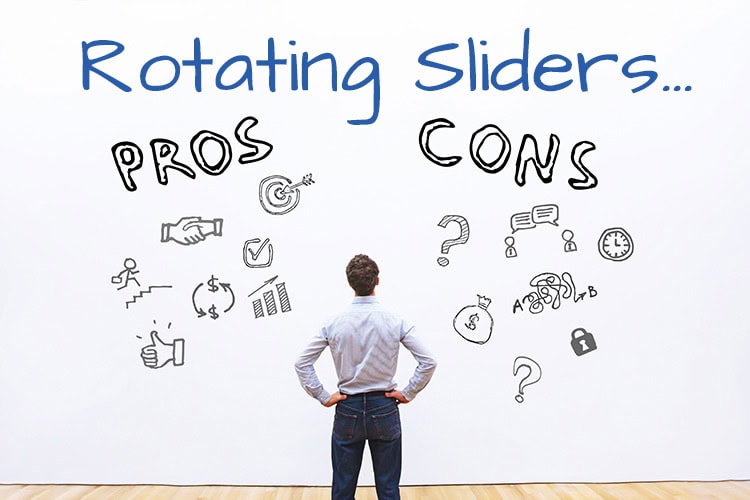
Optimizing Your Website Navigation for CX/UX/UI
A user-friendly website with intuitive navigation is crucial for delivering excellent customer experience (CX) and user experience (UX/UI), as well as for search engine optimization (SEO). Seamless website navigation helps guide visitors to the information they want quickly and easily. Whether visitors land on your site from search engines or directly, you want their experience finding what they need to be as smooth as possible to keep them engaged with your content.

In this article, we’ll explore tips for optimizing website navigation on your Venice, Florida business site for maximum CX/UX and to facilitate visitors finding your important pages – critical both for usability and SEO.
Simplify Menu Options
A clean, simple site menu allows visitors to quickly scan options and find important pages. Evaluate if menu items can be consolidated or removed. For example, a site for a Venice cafe could have a menu structure like:
Home
About
Menu
Contact
Rather than:
Home
Our Story
Hours
Food Menu
Drink Menu
Daily Specials
Contact Us
Find Us
With fewer optimized menu categories, visitors can easily spot pages they need, like the menu. Pages like “Our Story” and “Contact Us” are still accessible through descriptive dropdowns if needed.
Utilize Header, Footer, and Sidebar Menus
In addition to the main navigation menu, take advantage of menu real estate in the header, footer, and sidebars across pages for providing secondary access points to important pages.
For example, while “Menu” can be in the main menu bar, also list it in the footer so a visitor who scrolls down still has one-click access. Phone, address, social media links, FAQs, etc. can go in sidebars and footers too as secondary menus.
Prioritize Critical Pages in Navigation Order
List the most important site pages visitors should find first within the top navigation menu from left to right. This includes category and service pages searchers likely use keywords around to land on your site for.
For a Venice landscape design company, priority order could be:
Home About Services Portfolio Contact Blog
Since “Services” is a critical category searchers likely seek out, it is higher priority to list earlier in the menu order compared to say “Portfolio” or “Blog”.
Implement Intuitive Category Trees and Architecture
When applying good information architecture practices, think about what pages, content, and site sections logically belong together from the visitor perspective. Site architecture and category trees should intuitively guide them to related content.
For example, secondary dropdown menus under top-level categories could have:
Services Landscape Design Hardscapes Landscape Installation Lawn Maintenance
Rather than a confusing structure like:
Services Landscape Design Lawn Care Stone Patios Planting Beds
With intuitive architecture, visitors easily navigate to subcategories once selecting a main category like “Services”.
Use Descriptive Menu Link Labels
Avoid vague, generic labels like “Page 1”. Instead, craft descriptive menu items that clearly communicate what page a link leads to, like “Landscape Portfolio”. Visitors will better understand your site structure.
Also, use consistent link labeling across menus. If a page is labeled “Our Services” in the footer but “What We Do” in the main menu, this causes confusion.
Implement Site Search
Even with optimized navigation, visitors may sometimes struggle to locate pages or specific content. An internal site search allows them to quickly enter keywords or questions and find relevant pages. Site search improves CX and content discoverability.
For a law firm’s site, search could uncover niche content like “Venice beach easement laws” that may not have its own navigational category. Site search enhances visitors finding niche content they seek.
Use Breadcrumb Navigation
Breadcrumbs (e.g. Home > Services > Landscape Design) orient visitors as to their location within the site hierarchy. They also double as secondary navigation links to quickly jump back to higher-level categories without needing to return to the main menu.
Carefully choose link labels within breadcrumbs so relationships between categories and pages make sense. For example:
Home > Attorneys > Thomas White > Blog > divorce law changes 2023
Indicates blog content by attorney Thomas White specializing in divorce law. This better conveys page context vs:
Home > Page 5 > Thomas W > Article 01 > 2023 laws
Which lacks meaning without context.
Test, Optimize, Repeat!
Even after implementing these tips, regularly test site navigation to identify points of friction impacting CX and UX. Use analytics to understand where visitors go when first landing on pages and if they have trouble finding certain content.
As your website evolves, continue refining and enhancing navigation—A/B testing different menu structures, search implementations, etc. Measure how changes impact KPIs like pages per session, bounce rates, and conversion rates. Iteratively improve site architecture and menus based on findings. What optimizes CX, UX, and UI today may need revising six months from now!
Prioritizing intuitive navigation creates seamless website explorability while also facilitating visitors discovering your priority pages. The payoff is sustaining site engagement, nurturing conversion opportunities, and earning positive CX for showcasing your Venice, Florida business as an authority site visitors want to keep returning back to!



